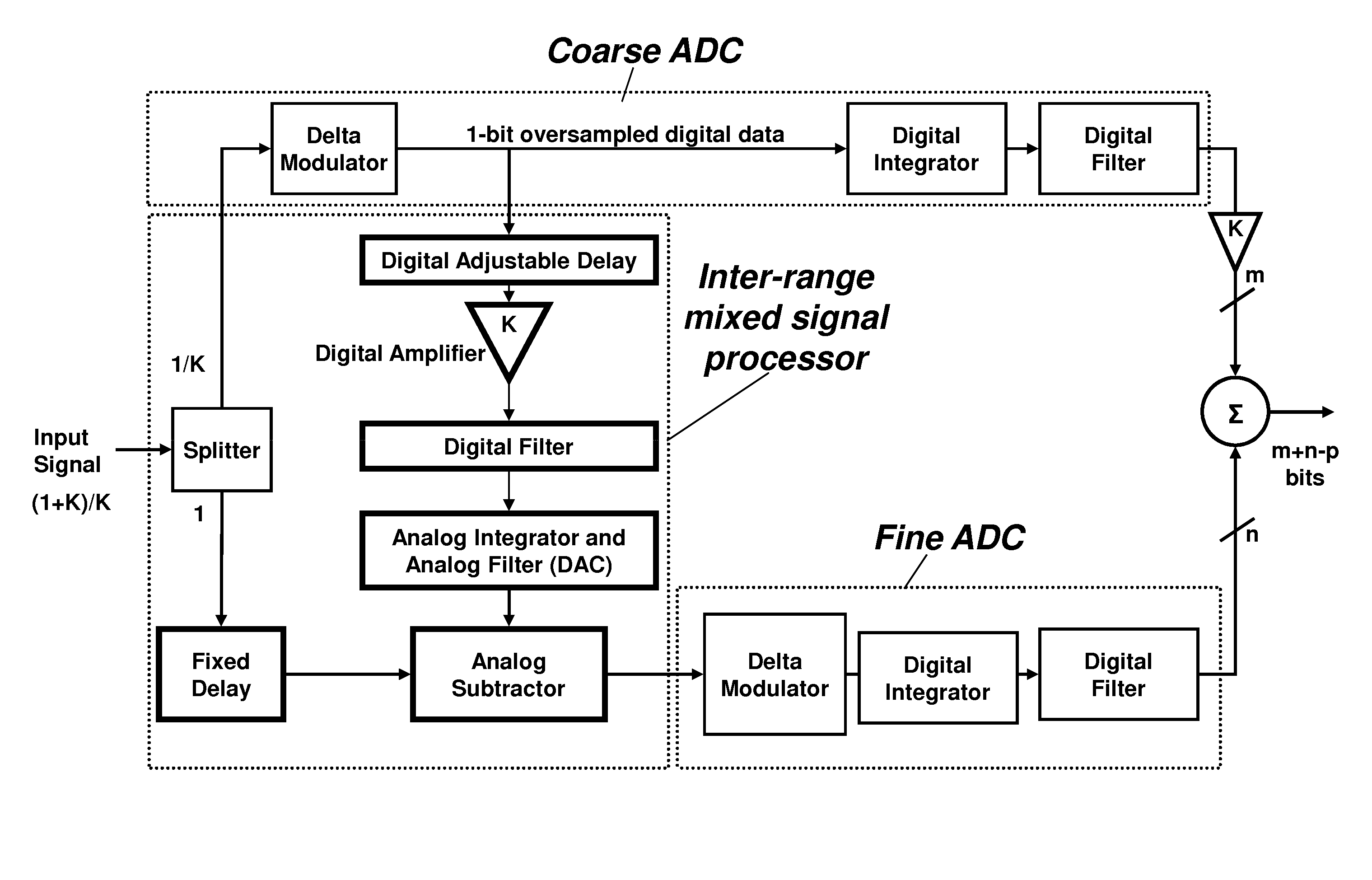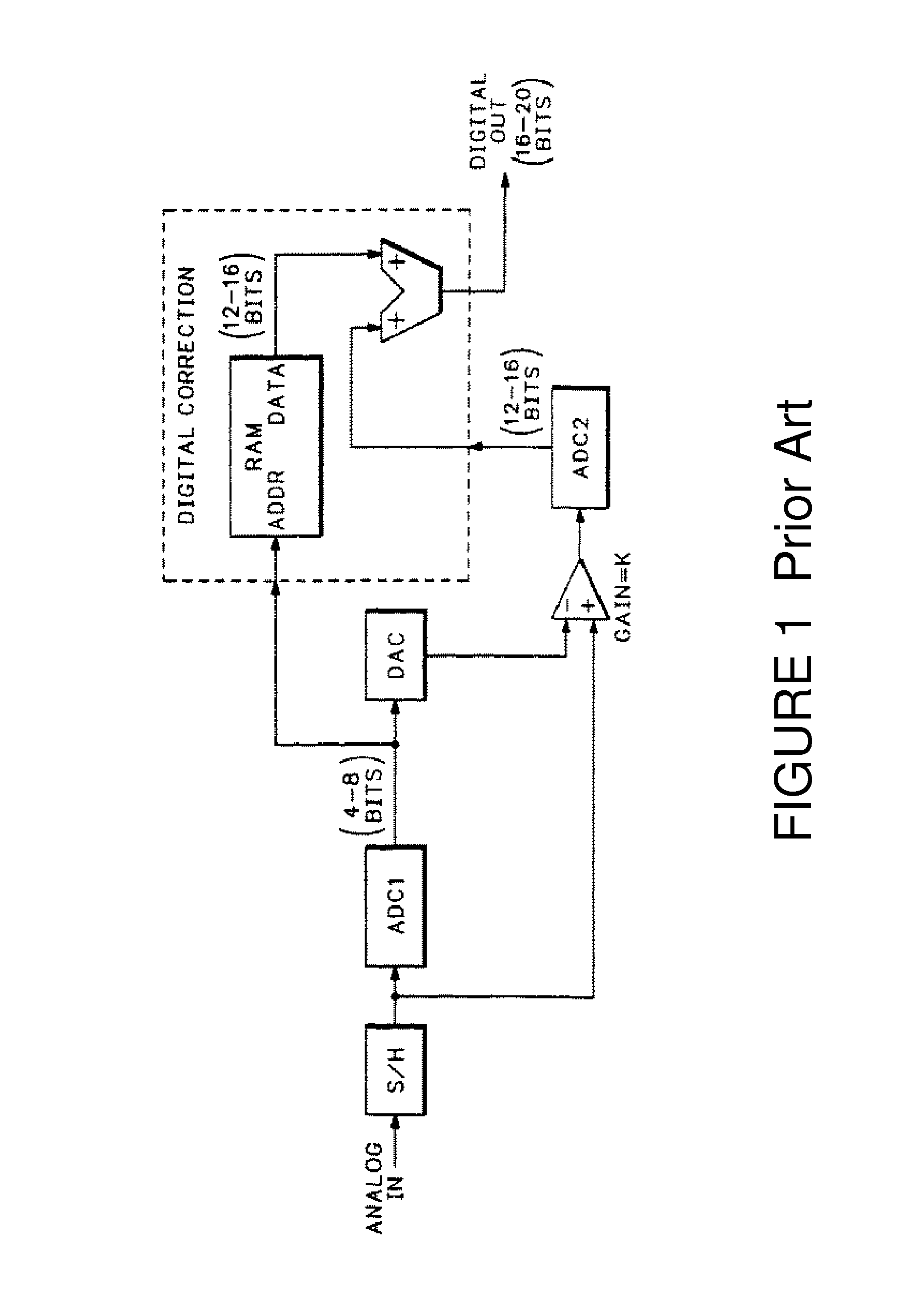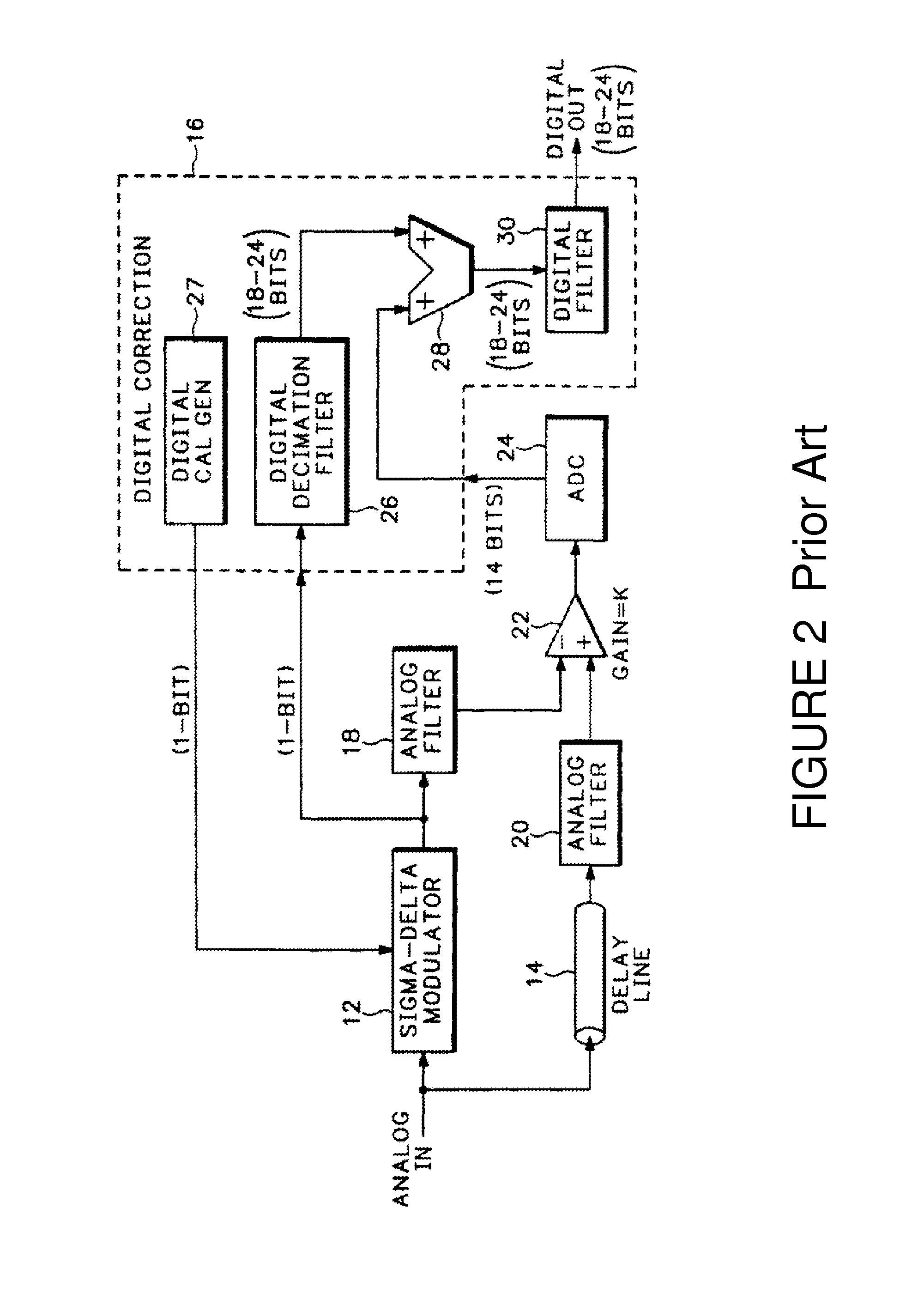Superconductor analog to digital converter
a superconductor and digital converter technology, applied in digital-analog converters, analogue/digital conversion, instruments, etc., can solve the problems of limiting the performance of the overall subrange adc, general impracticality of inclusion of a semiconductor amplifier within a superconductor circuit, and reducing the output bandwidth. , the effect of increasing the effective number of bits
- Summary
- Abstract
- Description
- Claims
- Application Information
AI Technical Summary
Benefits of technology
Problems solved by technology
Method used
Image
Examples
Embodiment Construction
[0089]The subranging approach is widely used for high-performance ADCs to increase dynamic range. In a subranging ADC, the signal to be digitized is split, going to a coarse ADC and a fine ADC. The output from the coarse ADC is subtracted from the input, forming a residue signal that is essentially the coarse ADC's quantization error. Upon digitization of this residue signal with finer resolution in a fine ADC, we can sum the two ADC outputs and get cancellation of the coarse quantization error. Therefore, we simultaneously obtain the high maximum signal level of the coarse ADC and the fine quantization steps of the fine ADC, resulting in a much higher dynamic range than either ADC. In other words, the outputs from the coarse and fine ADC's form the most significant bits (MSB) and least significant bits (LSB) respectively of the subranging architecture.
[0090]With only one type of modulator, such as a low-pass delta modulator based on the principle of phase modulation-demodulation (P...
PUM
 Login to View More
Login to View More Abstract
Description
Claims
Application Information
 Login to View More
Login to View More - R&D
- Intellectual Property
- Life Sciences
- Materials
- Tech Scout
- Unparalleled Data Quality
- Higher Quality Content
- 60% Fewer Hallucinations
Browse by: Latest US Patents, China's latest patents, Technical Efficacy Thesaurus, Application Domain, Technology Topic, Popular Technical Reports.
© 2025 PatSnap. All rights reserved.Legal|Privacy policy|Modern Slavery Act Transparency Statement|Sitemap|About US| Contact US: help@patsnap.com



